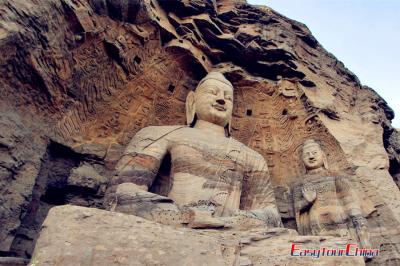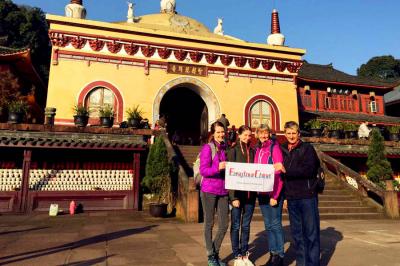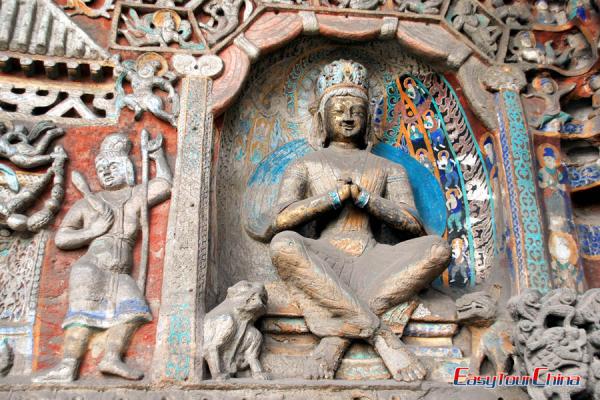Yungang Grottos
With the wide spread of Buddhism in China in the second century, grotto art was introduced to China from India, developing rapidly between the second and fourth centuries. Grottoes were carved in cliff faces in various places, particular in North China. The best know among them are the Dunhuang Grottoes, Maijishan Grottoes in Gansu Province, the Longmen Grottoes in Henan Province and the Yungang Grottoes in Shanxi Province.

Located 16 kilometers west of Datong city, the Yungang Grottoes are hewn out of cliff-sides in a honeycomb pattern, stretching for 1,000 meters (1 km) from east to west. The Grottoes were built more than 1,500 years ago in the Northern Wei Dynasty. The huge project got underway around 460. Within four decades, a thousand grottoes and some one hundred thousand Buddhist statues were completed together with large numbers of niches and colorful decorations. Nowadays, more than 51,000 statues remain, the largest being 17 meters high and the smallest only few centimeters. Whether huge or tiny, all are meticulously carved. The Yungang Grottoes is one of the largest group grottoes in China and also a world famous art treasure.
 Apart from the Buddhist statues there are multiple niche on the wall of the stone chambers and these are embellished with sculpture of flying Apsaras, Buddhist episodes, edifices, flowers and other quaint design. They benefit the study of ancient Chinese architecture, sculpture, costumes, art, painting, carving and musical instruments.
Apart from the Buddhist statues there are multiple niche on the wall of the stone chambers and these are embellished with sculpture of flying Apsaras, Buddhist episodes, edifices, flowers and other quaint design. They benefit the study of ancient Chinese architecture, sculpture, costumes, art, painting, carving and musical instruments.
Of the existing 53 grottoes, 21 are spacious and divided into three distinct groups: the eastern, middle and western. The eastern group (Grottoes 1 to 4) contains mainly pillars and Buddhist statues; the middle group (Grottoes 5 to 13) and the western group (Grottoes 14 to 21) are the most splendid.
In 2001, Yungang Grottoes in Datong was added to the list of World Heritage Sites by UNESCO.
More Attractions in Datong


